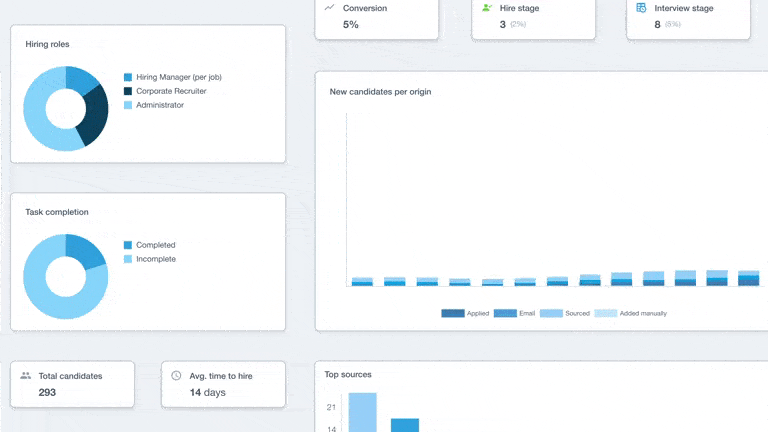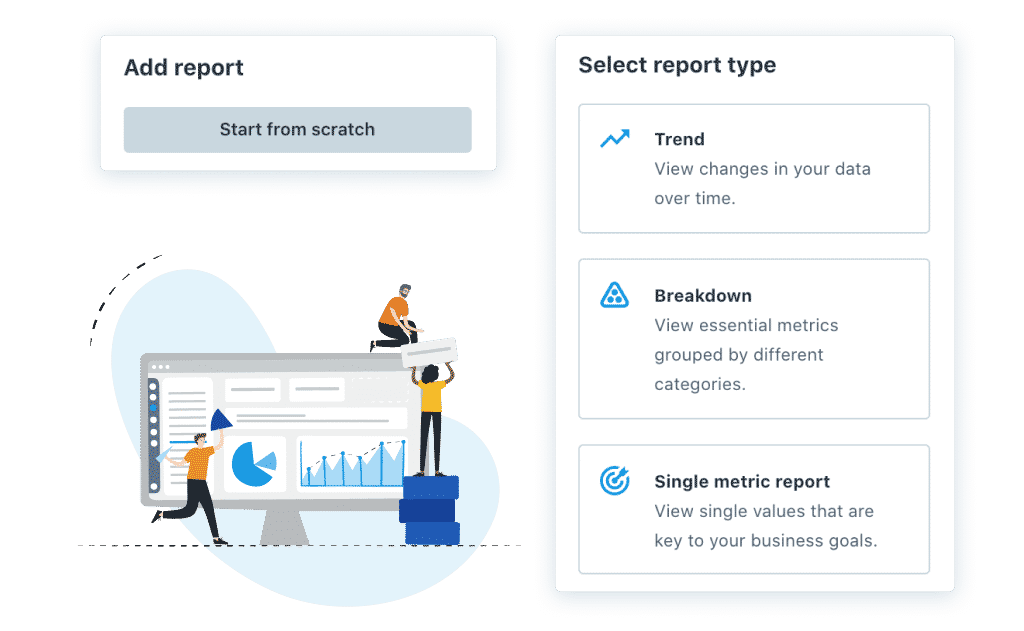HR metrics, recruitment analytics, predictive data, artificial intelligence, tracking, integrations…If you’re feeling bewildered by all the terms swirling around in the HR sector today, relax!
Once you understand these terms, you’ll see how efficient your hiring process, employee engagement, and retention policies can become when you opt for data-driven recruitment. Digital technology is revolutionizing human resources, and companies, from start-ups to multi-nationals are reaping the benefits.
What are HR metrics and analytics?
Some examples of important HR metrics are cost per hire, employee turnover, length of employment, employee satisfaction, revenue per employee, absenteeism, the average time to promote, and cost per employee.
But let’s start bringing some order to the confusion by looking more closely at HR metrics.
Briefly, the cost and impact of your recruitment processes, talent management programs, and post-employment initiatives are quantified by HR metrics. Relevant data gathered from initiation of new posts, through the hiring process, as well as internal data on existing staff trends, are measured.
Here is an example of Recruitee's HR dashboard of metrics and analytics:

In this article we’ll cover:
- How to use metrics in HR to measure success
- Using HR data to identify poor hiring process
- Three HR metrics you should be using today
- Using predictive analytics in HR
Importance of HR metrics and analytics
The success of any business depends on the productivity and total buy-in of their workforce. HR metrics give management insight into the synergy between hiring and HR policies and procedures, and overall business success.
If you’re able to attract the right type of people to your employer brand, your business will thrive. Conversely, if you keep making bad hiring decisions as a result of reactive recruitment, your company will suffer. Identifying a trend of misplacements backed by evidence-based data is a compelling argument to implement changes to how your employer brand attracts talent.
Knowing the ratio between high and low performers on your payroll gives invaluable insight into the potential lack of profitability. Pinpointing departments with a history of substandard performance allows you to analyze the situation and intervene with confidence.

How do HR metrics identify poor hiring processes?
Most productivity and performance issues, whether high or low, can be traced back to the initial hiring process. If your company has a high ratio of low performers, it means that most of your staff can be considered as an expense. To succeed in business, you want your staff to be regarded as an investment, or human capital, because of their ongoing contribution to the company’s success.
If your company doesn’t have clear recruitment and selection process policies implemented, you’re likely hiring the wrong type of people for your business. Repeatedly trying to force a square peg into a round hole doesn’t work and will lead to low productivity and reduced staff retention.
Talent metrics track core activities. And through data gathered over time, will highlight flaws in your hiring process that lead to increased costs and low productivity levels, as seen below in Recruitee's Report Builder feature.

.
3 HR metrics and analytics you should be using today
In this section, we'll explore some examples of HR metrics and analytics that could benefit your organization.
1. Time to hire and time to fill
Many hiring managers overlook the cost impact of the time to hire and time to fill simply because of the pressure created by an open position. These are, however, probably of the most important metrics for any business.
If a vacancy remains open for too long, it creates obvious stressors within the department and negatively impacts outputs. However, hasty hiring decisions could be even worse because appointing an unsuitable candidate can become a drawn out and costly process to restore.
Metrics identify repeated patterns that emerge as a result of flaws in your hiring process, allowing you to restructure and implement necessary change. You’ll also be able to ascertain traditionally hard to fill roles so that you can put contingency plans in place immediately you become aware of an opening.
2. Engagement rating
Measuring the rate of employee engagement is vital to understanding how motivated and satisfied your workforce is. People who are happy at work are more productive and loyal to their employer brand. They’re also keen to contribute to the success of their company.
If even a small percentage of your workforce is disengaged, your business will suffer. Employees who are dissatisfied not only have a negative impact on their colleagues, but they are also less productive and tend to have a high degree of absenteeism.
Having access to reliable metrics allows you to identify where the shortfalls in employee engagement exist so that you can improve.
Relevant: 20 employee engagement survey questions to ask
3. Employee turnover
Many companies don’t attain their maximum market potential because they’re continually having to replace employees leading to a lack of depth in skills (Points 1 and 2 above feed directly into this problem).
If you either hire in haste or leave vacancies unfilled for months on end, you’ll eventually be faced with low staff retention. Unsuitable appointments, as well as too great a workload, will take their toll on existing staff as well as new employees.
If your staff turnover is higher than average, your hiring costs are also likely way too high as well. Once again, metrics will identify where there’s a pattern of high staff turnover. This gives you the opportunity to analyze the existing processes and start doing things differently. You may opt to keep a pulse on your future employee retention by consistently measuring your employee engagement.
What HR metrics are most important to the organization?
Predictive data in HR is an important metric to organizations. it is the result of tracking activities, processes, and outcomes until patterns emerge. These will give you greater insight into what works well and what doesn’t when it comes to hiring.
Relevant: Complete guide to tracking the right recruitment metrics
Simply put: HR metrics feed into analytics where patterns are identified. Repetitive patterns can be used to predict future outcomes. This is an excellent tool for hiring managers! Apart from identifying existing problems, predictive data allows for better planning and decision making based on existing evidence.
The analysis of metrics can completely transform your hiring process and give you greater control over end results. Knowing in real time where issues exist in your HR processes allows you the opportunity to make procedural adjustments and to plan ahead.
You can integrate remedial developments like improvements to identifying the best talent, better employee engagement, and expanded training policies into your metrics. That way you can measure their effectiveness on the quality of future hires, improved staff engagement and retention, and decreased hiring costs.
Data-driven recruitment provides endless options
No two companies are the same, so not everyone will want or need the same HR analytics. The three points highlighted in this article apply to business across the board. You could, however, benefit from many different types of metrics and analytics, depending on the type and size of your business.
Data-driven recruitment allows you to create KPI tables for HR managers to use as a guide. You can write the HR metrics formulas that are unique to your business so that you get the information you need.
Billable hours per employee, revenue per employee, cost of HR per employee or measuring performance and potential, for example, can be of great value to you when used as a measure. From small businesses who invest in an ATS to global enterprises who also incorporate big data, HR analytics is changing the face of recruitment.







